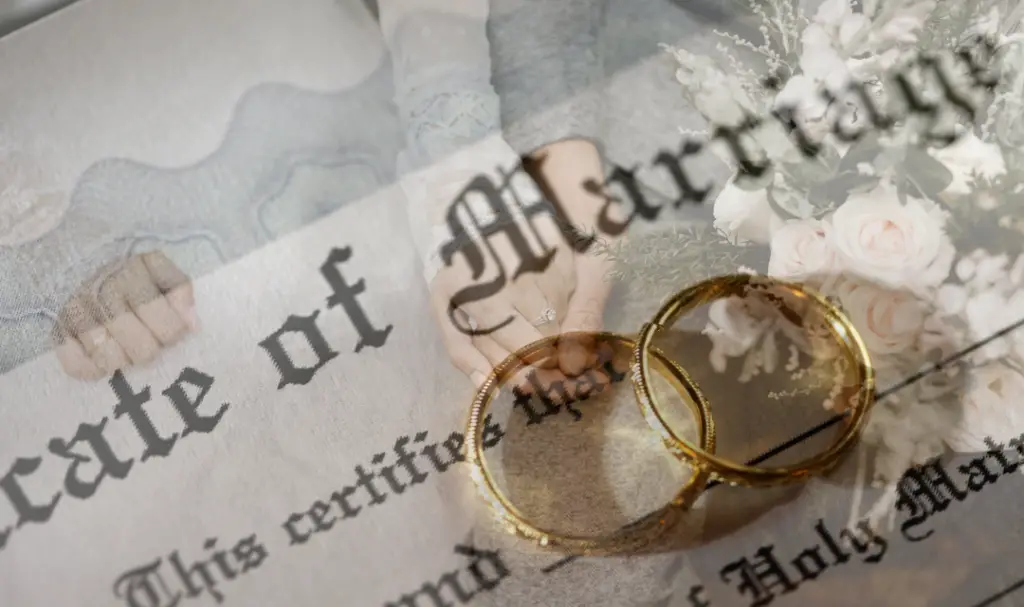Introduction
What is marriage in the Family Code? Executive Order No. 209 otherwise known as the “Family Code of the Philippines” under Art. 1 defines marriage as:
“a special contract of permanent union between a man and a woman entered into in accordance with law for the establishment of conjugal and family life. It is the foundation of the family and an inviolable social institution whose nature, consequences, and incidents are governed by law and not subject to stipulation, except that marriage settlements may fix the property relations during the marriage within the limits provided by this Code.”1
Certain theories about marriage, specifically in a traditional country such as ours, aim to protect and preserve the sanctity of marital knot. These theories often state that marriage is an inviolable social institution and that the law favors its validity.
In fact, it is only in the Philippines, apart from the Vatican, where divorce law is not enforced. It is also worth noting that our laws on marriage are for unions between a man and a woman. The Catholic roots in the Philippines influenced a conservative stance among the Filipinos, anchored on the teachings of the church.
What is marriage in the Family Code?
Majority of the citizens or parishioners shows indifference towards the acceptance of divorce or abortion despite being pressing social issues. As an inviolable social institution, marriage is a matter of public interest. It is the very foundation of family life protected by the State.
As stressed in Jimenez vs. Republic,2 the security and stability of the state is largely dependent upon it. Thus:
“Marriage in this country is an institution in which the community is deeply interested. The state has surrounded it with safeguards to maintain its purity, continuity and permanence. The security and stability of the state are largely dependent upon it. It is the interest of each and every member of the community to prevent the bringing about of a condition that would shake its foundation and ultimately lead to its destruction. x x . .”3
The succeeding paragraphs attempt to capture and explain relevant provisions and theories of the Family Code which highlights on the sanctity and permanence of marriage as commonly encapsulated in the couple’s recital of the marriage vows – “to have and to hold, till death do us part…”.
Purpose of Marriage
Article 1 of the Family Code explicitly captures the purpose of marriage: to establish a conjugal and family life. However, no law punishes the contracting parties from entering into marriage for purposes other than what was declared by the Constitution or the law.
For as long as the requirements of a valid marriage are complied with, then the State cannot interfere to question the intent of the parties, nor declare the nullity of their union.
This concept has been explained by the Court in the case of Republic vs. Albios4 where a Filipino citizen contracted a marriage with an American citizen for the sole purpose of acquiring American citizenship in consideration of a sum of money. The validity of marriage may only be assailed on the grounds provided by the law.
“Under said Article 2, for consent to be valid, it must be (1) freely given and (2) made in the presence of a solemnizing officer. A “freely given” consent requires that the contracting parties willingly and deliberately enter into the marriage. Consent must be real in the sense that it is not vitiated nor rendered defective by any of the vices of consent under Articles 45 and 46 of the Family Code, such as fraud, force, intimidation, and undue influence. Consent must also be conscious or intelligent, in that the parties must be capable of intelligently understanding the nature of, and both the beneficial or unfavorable consequences of their act. Their understanding should not be affected by insanity, intoxication, drugs, or hypnotism.”5
The Supreme Court in Albios went on to state that:
“Based on the above, consent was not lacking between Albios and Fringer. In fact, there was real consent because it was not vitiated nor rendered defective by any vice of consent. Their consent was also conscious and intelligent as they understood the nature and the beneficial and inconvenient consequences of their marriage, as nothing impaired their ability to do so. That their consent was freely given is best evidenced by their conscious purpose of acquiring American citizenship through marriage. Such plainly demonstrates that they willingly and deliberately contracted the marriage. There was a clear intention to enter into a real and valid marriage so as to fully comply with the requirements of an application for citizenship. There was a full and complete understanding of the legal tie that would be created between them, since it was that precise legal tie which was necessary to accomplish their goal.”5
Requisites of Marriage
The essential requisites of marriage are embodied in Articles 2 and 3 of the Family Code, properly classifying the same as either essential or formal. The essential requisites of marriage are:
(1) legal capacity; and
(2) consent.
On the other hand, the formal requisites of marriage are:
(1) authority of the solemnizing officer;
(2) valid marriage license; and
(3) marriage ceremony.
These requirements are strictly required for marriages celebrated in the Philippines, applying the doctrine of lex loci celebrationis.
Validity of Marriage
Much of the provisions of the Family Code deal with the nature of marriage validity, where descriptions of what renders the union as void or voidable are well defined. Executive Order No. 209, likewise, laid down the rules on proceeding in cases where the validity of marriage is assailed. However, it has been held that the law favors the validity of marriage, hence strongly promoting its preservation.
In summary, a marriage may be declared void ab initio or may be terminated based on grounds as declared by the law through the filing for judicial declaration of nullity of marriage and the Court granting of the same.
Said declaration produces legal effects on the status of the marriage, the legitimacy of the common children, property relations and forfeiture of the share of the party who acted in bad faith.
Rights and Obligations Between Husband and Wife
Title three of the Family Code narrates the rights and obligations of the parties to the marriage. As stated in Article 68 of the said code, “The husband and wife are obliged to live together, observe mutual love, respect and fidelity, and render mutual help and support.”6
To enumerate, marital obligations include cohabitation, mutual love, respect, fidelity, help, sexual relations and support. According to the first paragraph of Article 69 of the Family Code, “It is the responsibility of the husband and wife to fix the family domicile. In case of disagreement, the court shall decide.”7
Under the Revised Penal Code, acts that translate to sexual infidelity are punishable by the law but may not be an absolute ground to assail the validity of the marriage. To fulfill the basic end of marriage, procreation is also an essential marital obligation. Spouses are, likewise, legally bound to provide mutual help and support during the existence of the marriage.
Under Article 68, it is only the obligation of mutual support between the spouses which can be enforced through legal action. The Family Code dedicates Title VIII in defining the support contemplated by the said code.
Family as a Social Institution
Citing provisions of the Family Code under Title V:
Art. 149. The family, being the foundation of the nation, is a basic social institution which public policy cherishes and protects. Consequently, family relations are governed by law and no custom, practice or agreement destructive of the family shall be recognized or given effect.8
Art. 150. Family relations include those:9
(1) Between husband and wife;10
(2) Between parents and children;10
(3) Among brothers and sisters, whether of the full or half blood.10
It is a categorical under the Philippine setting that family is given primary importance. This is well recognized by the Constitution as described in the book of Rabuya, that the Filipino family is depicted as the “foundation of the nation.”
It is not alone the obligation of the spouses or family members to preserve the unity of the family, but also of the State by providing safeguards to strengthen the family ties and ensure its autonomy. The concern of the State is that much for the family as it laterally impacts upon the moral and social fabric of the society.
We can likewise note that the Filipinos cherish the family as going beyond the scope defined by the law. Filipinos traditionally and typically regard extended family members at times even by affinity, as still part of the family.
Family Home
The pertinent articles of the Family Code provide for a pretty straightforward definition of what constitutes a family home. To quote verbatim the specific provisions of the code suffices to render a vivid description of the subject:
“Art. 152. The family home, constituted jointly by the husband and the wife or by an unmarried head of a family, is the dwelling house where they and their family reside, and the land on which it is situated.11
Art. 153. The family home is deemed constituted on a house and lot from the time it is occupied as a family residence. From the time of its constitution and so long as any of its beneficiaries actually resides therein, the family home continues to be such and is exempt from execution, forced sale or attachment except as hereinafter provided and to the extent of the value allowed by law.12
Art. 154. The beneficiaries of a family home are:13
(1) The husband and wife, or an unmarried person who is the head of a family; and10
(2) Their parents, ascendants, descendants, brothers and sisters, whether the relationship be legitimate or illegitimate, who are living in the family home and who depend upon the head of the family for legal support.”10
Briefly, the State protects the family home in the same degree as it does so for the family, regarding the same not just as the physical structure. Instead, family home is a shelter where mutual love between the couple and among the fruits of their union are freely expressed and where beautiful memories are created and cherished for life.
The family home is an inalienable real right constituted over the dwelling place and which confers upon the family the right to enjoy such properties, free from attachment.
In the case of Josef vs. Santos,14 certain personal properties were auctioned to fully satisfy the judgment. Petitioner argued that the property was his family home thus exempt from execution.
“The Supreme Court held that the family home is the dwelling place of a person and his family, a sacred symbol of family love and repository of cherished memories that last during one’s lifetime. It is the sanctuary of that union which the law declares and protects as a sacred institution; and likewise, a shelter for the fruits of that union. It is where both can seek refuge and strengthen the tie that binds them together and which ultimately forms the moral fabric of our nation. The protection of the family home is just as necessary in the preservation of the family as a basic social institution, and since no custom, practice or agreement destructive of the family shall be recognized or given effect, the trial court’s failure to observe the proper procedures to determine the veracity of petitioner’s allegations, is unjustified.”15
Conclusion
In this article, the cycle of marriage and family life is encapsulated as it is and as it should be in a perfect world; that is, to commence via a consensual union between the couple, safeguarded by the participating parties, the Constitution, and laws enacted by the State.
Laws aimed to protect and ensure the marriage’s permanence, at least until the end that only death shall terminate the said physical union. It further tackles the essential and formal requisites of the law that must be complied with to validate the marriage as well as the rights conferred upon the parties by way of said marriage as well as their obligations uprooting from the same.
While the Philippine Congress framed laws guiding the procedures for the termination of marriage before the death of a spouse, the majority of Filipinos express a more conservative rather than a liberal view on this.
A stance anchored primarily on traditions, religious beliefs and faith. Certain conditions may render manifestations that preserving the marriage would no longer serve the very purpose of the union. For instance, that one or both of the spouses may have gravely neglected their duties toward the spouse or children. This may cause destruction of the family unit should the marriage remain intact.
Albeit developments in annulment of marriage, the concept of the law favoring the validity of marriage remains in force and is hard to challenge. Such as in the more recent case of Tan-Andal vs. Andal,16 proving psychological capacity as a legal rather than a medical condition and dispensing with the requirement of an expert opinion on the existence of the same but instead relying on the totality of evidence.
- Article 1, Family Code[↩]
- G.R. No. L-12790, August 31, 1960[↩]
- Ibid.[↩]
- G.R. No. 198780, October 16, 2013[↩]
- Ibid.[↩][↩]
- Article 68, Family Code[↩]
- Article 69, Family Code[↩]
- Article 149, Family Code[↩]
- Article 150, Family Code[↩]
- Id.[↩][↩][↩][↩][↩]
- Article 152, Family Code[↩]
- Article 153, Family Code[↩]
- Article 154, Family Code[↩]
- G.R. No. 165060, November 27, 2008[↩]
- Ibid.[↩]
- G.R. No. 196359, May 11, 2021[↩]


